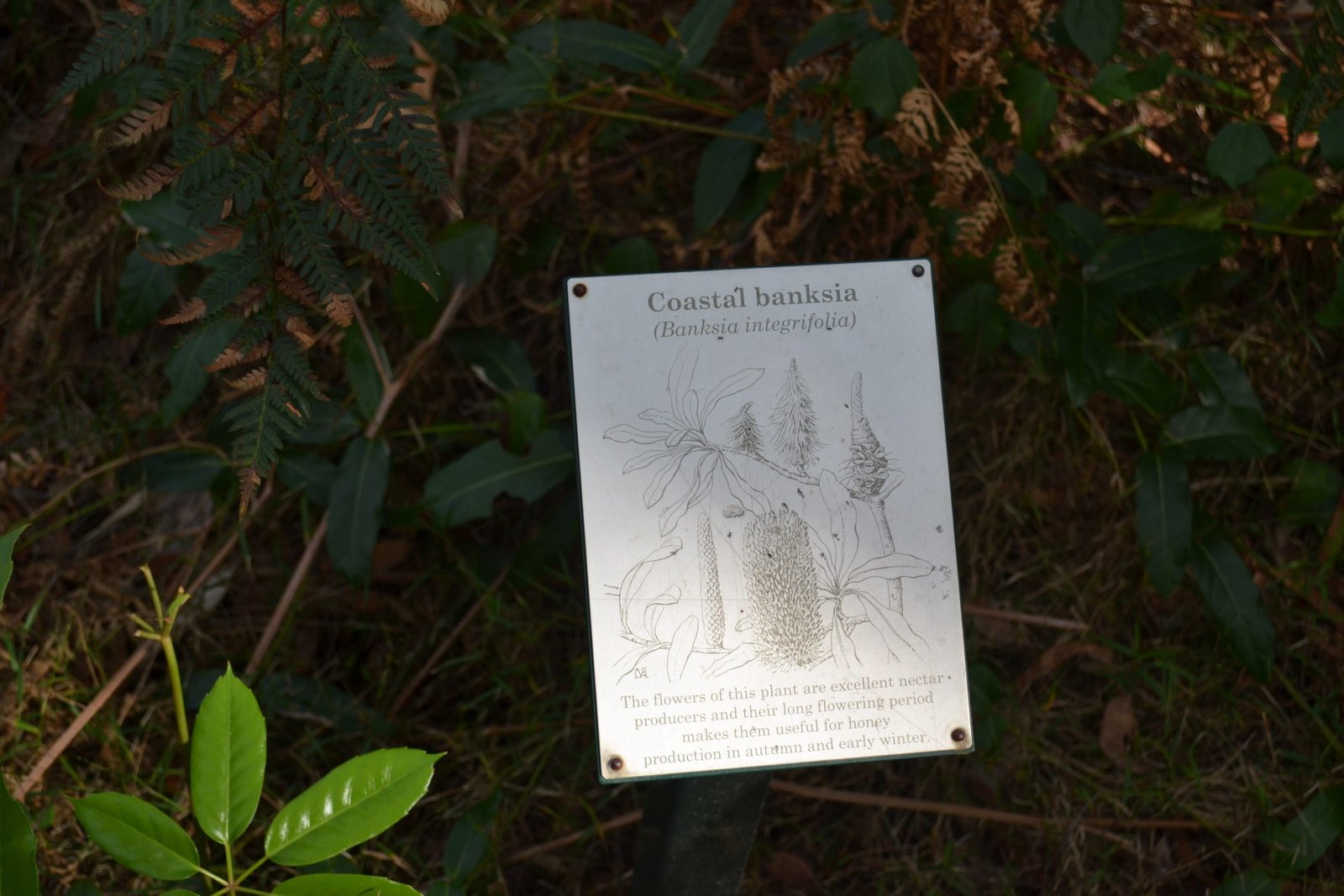Banksia integrifolia
also known as coast banksia, coastal banksia, honeysuckle, white banksia, white bottlebrush, and white honeysuckle. Coast Banksia is an Australian coastal tree or shrub that can grow upwards of 25 meters in height. It has a single rough gray stout trunk that is often depicted gnarled and twisted. It has dark green leaves with white undersides. It was identified and named after Sir Joseph Banks in 1782. It has a flower spike – an inflorescence made up of several hundred densely packed greenish – pinkish – pale yellow budding flowers spiraling around its woody axis.
Uses:
It is commonly used for landscaping, especially in parks and along streetscapes, bush revegetation, and stabilization of dunes. The wood is pink to red with inconspicuous rings and conspicuous rays that is spongy and porous so used for decorative woodwork, cabinet panelling, ornamental turnery, boat knees, and firewood. Bees visiting the plant make a highly sought after dark amber honey.
References:
- Plant Lust n.d. “Banksia integrifolia” Website visited 6/22/21 at https://plantlust.com/plants/12302/banksia-integrifolia/
- UFEI n.d. “Coast Banksia” SelecTree: A Tree Selection Guide. Website visited 6/22/21 at https://selectree.calpoly.edu/tree-detail/1694
- Wikipedia n.d. “Banksia integrifolia”. Website visited 6/22/21 at https://en.wikipedia.org/wiki/Banksia_integrifolia.




1 thought on “Banksia integrifolia: Coastal banksia”
Comments are closed.